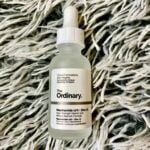
Icing on face for glowing and wrinkle-free skin
“Does Icing Your Face Really Work and Is It Safe? Discover the Benefits, Risks, and FAQs”
The Science Behind Icing Your Face

- Icing the face involves applying ice or cold packs directly to the skin.
- This technique is believed to improve circulation, reduce inflammation, and tighten the skin, which can help minimize the appearance of wrinkles and puffiness.
- Cold therapy has long been used in sports medicine and physical therapy for its anti-inflammatory benefits, and these principles are applied to skincare as well.
Benefits of Icing Your Face

- Reduces Puffiness: Cold temperatures help constrict blood vessels, reducing swelling and puffiness, especially around the eyes.
- Tightens Skin: The cold can temporarily tighten the skin, giving it a firmer and more youthful appearance.
- Improves Circulation: Icing can boost blood flow to the skin, enhancing its overall health and glow.
- Minimizes Pores: Cold therapy can help reduce the appearance of enlarged pores.
- Soothes Inflammation: It can calm irritated skin, making it beneficial for conditions like acne or rosacea.
Risks and Precautions of icing your face:

While icing can offer several benefits, there are potential risks to consider:
- Skin Damage: Prolonged exposure to ice can cause frostbite or ice burns. Always wrap ice in a cloth and limit the application time.
- Dryness: Cold can strip the skin of its natural oils, leading to dryness. Moisturize well after icing.
- Sensitivity: People with sensitive skin or conditions like rosacea may experience increased irritation with icing.
How to Safely Ice Your Face
- Wrap the Ice: Always wrap ice cubes or cold packs in a clean cloth to prevent direct contact with the skin.
- Limit Time: Apply the ice for no more than 1-2 minutes at a time, taking breaks to allow your skin to recover.
- Follow Up: After icing, use a gentle moisturizer to rehydrate your skin.
FAQs About Icing Your Face

Q1: How often should I ice my face?- A: It’s generally safe to ice your face 1-2 times a day. However, monitor your skin’s reaction and adjust as necessary.
Q2: Can I use icing as a replacement for other skincare products?- A: Icing should complement your skincare routine, not replace it. Continue using your regular cleansers, moisturizers, and treatments.
Q3: Are there any skin types that shouldn’t use ice?- A: Individuals with very sensitive skin, broken capillaries, or severe rosacea should avoid icing or consult a dermatologist first.
- Q4: Can I use other cold items like frozen spoons or chilled
rollers? A: Yes, tools like chilled jade rollers or frozen spoons can be used for a similar effect, often with more controlled application.
Pros and Cons of Icing Your Face

| PROS | CONS |
Reduces puffiness and swelling | Risk of frostbite or ice burns |
| Temporarily tightens skin | Can cause dryness or irritation |
| Improves circulation and skin glow | Not suitable for all skin types |
| Minimizes the appearance of pores | Temporary effects |
Conclusion
Icing your face can be a quick and effective way to reduce puffiness and give your skin a temporary lift. However, it’s important to practice this technique safely to avoid potential skin damage. As with any skincare method, listen to your skin and consult with a dermatologist if you have any concerns.
Unlocking youthful, radiant skin by incorporating icing into a well-rounded skincare routine can help you enjoy its benefits while maintaining healthy, wrinkle-free skin. Remember, reducing puffiness and enhancing your glow doesn’t have to come with risks if done properly. Always prioritize safe and effective skincare practices to achieve the best results.
acne scars affordable affordable makup brands Beauty ClownMakeup easy makeup Halloween magical effect makeup Makeup by Mario popular skin problems ThinnerLips treating acne









Leave a Comment